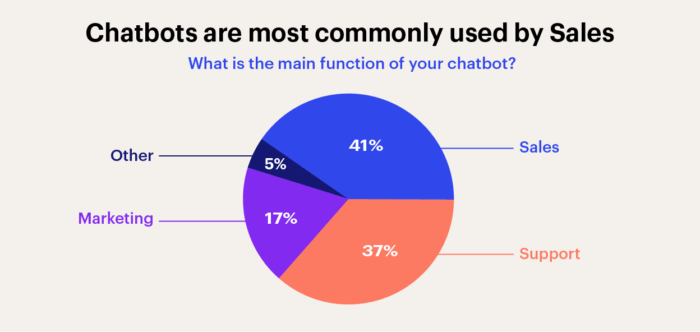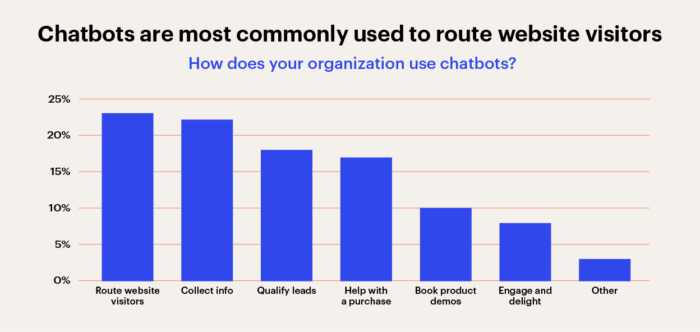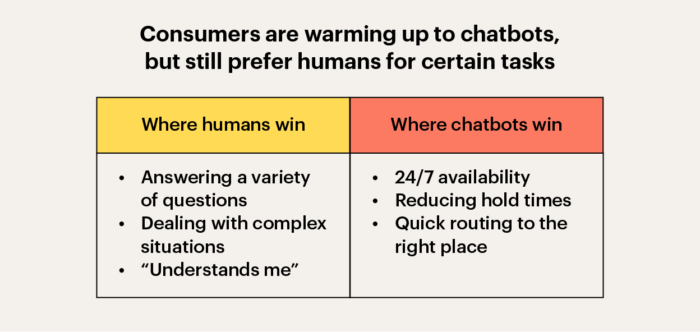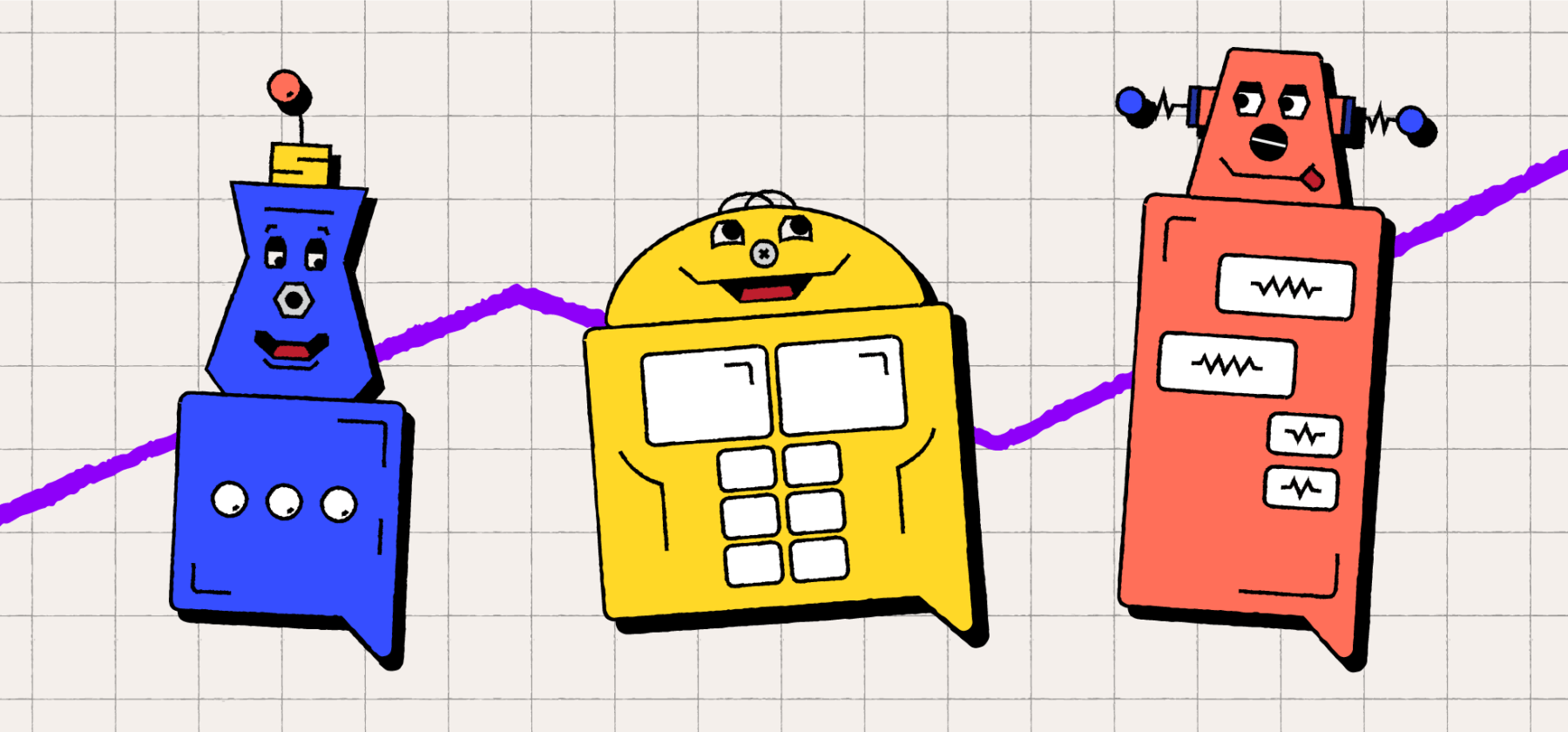
Where chatbots are headed
Chatbots are on the verge of living up to their hype, with new research commissioned by Intercom indicating where they can have the most impact.
We fundamentally believe chatbots have the potential to transform businesses in two ways: by delivering radical efficiencies, and by helping businesses meet ever-increasing consumer demands.
In our very first Chatbot Trends Report, which we’re releasing today, we see the efficiency half of that equation start to unfold. We worked with an independent market research firm to survey a random sample of 500 consumers and 500 business leaders.
“Business leaders saved an average of $300,000 in 2019 from their chatbots”
The lede? Business leaders saved an average of $300,000 in 2019 from their chatbots, with the greatest impact occurring across support and sales teams. But for consumers, there’s still some room for improvement: although 74% expect to encounter a chatbot on a website, 87% of consumers still prefer humans to chatbots for quick interactions. That said, 25% of consumers wouldn’t care if they’re talking to a human or a chatbot, as long as they get to their desired outcome.
Chatbots for all
Chatbots are rapidly spreading beyond the realm of customer support to drive growth at all stages of the customer journey. In fact, sales is now the most common use case (41%), followed closely by support (37%) and marketing (17%).
We also found chatbots being used for a wide range of automated tasks, from routing visitors’ questions to the right team, to booking product demos, qualifying sales opportunities and engaging website visitors.
Satisfaction with chatbots varied by sector. B2C companies were twice as likely as B2B companies to be satisfied with their chatbot investments, perhaps due to the fact that B2C queries are generally more repetitive and less complex than B2B ones. The most satisfied industries were tech (73%), retail (67%), manufacturing (57%), and healthcare (56%).
What’s making companies so excited about their chatbot investments? Let’s break it down.
The ROI of sales chatbots
Over the past 30 years, the way we buy and sell has changed tremendously. Gone are the days of cold calling, telemarketing, and, to some extent, mass advertising. Modern consumers expect fast, personalized responses through chat, and doing so at scale is exactly where chatbots shine. This year, chatbots delivered impressive returns for sales adopters due to massive improvements in how they accelerate the sales job:
- Chatbots increased sales by an average of 67%, with 26% of all sales starting through a chatbot interaction.
- 35% of business leaders said chatbots helped them close sales deals.
- The top three sales uses cases are: collecting information and qualifying leads, booking product demos, and engaging website visitors.
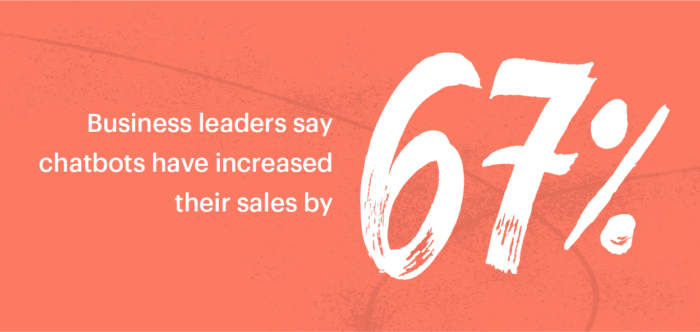
Chatbots are a key component of our conversational marketing at Intercom, too. We use our own Custom Bot on all the key pages of our site, including our pricing page, demo page, and homepage. For example if you visit our pricing page, our bot will trigger after a few seconds, asking how we can help. After answering a few questions you’ll be offered a suggestion for a plan that fits you best, or the opportunity to chat with someone from our sales team.
The ROI of support chatbots
It’s probably fair to say support teams were the earliest adopters of business chatbots – it’s more than 10 years since Alaska Airlines introduced the world to its virtual assistant, Ask Jenn:

Fortunately, support chatbots have come a long way since the Ask Jenn days. Modern chatbots form the backbone of self-service support strategies. They can help support teams triage issues, route questions, and deliver immediate resolutions, ultimately leading to more productive support teams and better experiences for customers. Specifically some of the benefits that chatbots delivered this year included:
- Business leaders say the number one way chatbots save costs is through faster customer response times.
- Chatbots sped up response times by an average of 3x.
- Business leaders say chatbots have increased their customer support satisfaction scores by 24%.
Anecdotally, our internal support team found that using Intercom’s Custom Bot cut down their resolution times by 50%. The chatbot was able to triage high volumes of incoming chats with ease, freeing up our teammates to handle more complex questions that required human troubleshooting.
Consumers aren’t totally satisfied – but there’s a silver lining
While businesses embrace the new opportunities chatbots open up, our findings show that chatbots don’t entirely meet consumer expectations.
Nearly 3 in 4 consumers expect to encounter chatbots on a website, but only 15% of consumers prefer chatbots to humans for a quick interaction with a company. In fact, 87% of consumers still prefer interacting with a human than a chatbot, if given a choice.
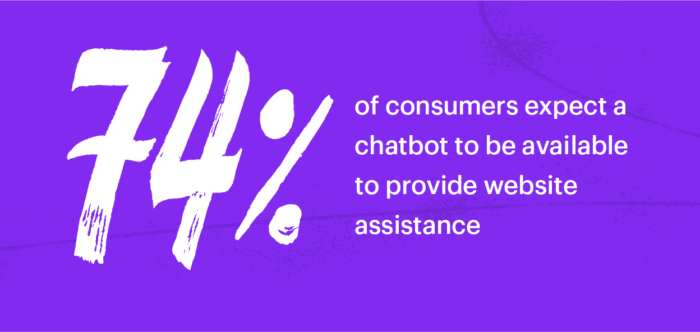
When asked why, respondents rated humans more highly than chatbots in three key areas:
- They can answer a variety of questions.
- They can understand complex situations.
- They can “understand me” better.
And now to our favorite stat: 25% of consumers are open to talking to a human or a chatbot, as long as it leads them to their desired outcome.
What’s more, consumers acknowledge the distinct advantages of our automated friends. The top three ways consumers think chatbots outshine humans are:
- 24/7 availability
- Reducing hold times
- Quick routing to the right team
In short, most consumers expect chatbots. They usually still prefer humans, but in a few cases, they don’t care about the distinction. What it means for businesses and chatbot builders is that the bar for chatbot experiences is higher than ever. So where do we go from here?
Looking ahead
Just a few years after chatbots were at “peak hype” it has become abundantly clear that they play an inevitable role in the future of online businesses. Just not in the way many chatbot makers envisioned it initially, eg. by replacing humans, assuming human personalities, etc.
“When ATMs were introduced in the late 1960s, businesses weren’t sure consumers would ever embrace a machine over a bank teller”
Instead, consumers want chatbots that respect their time and lead them to a desired outcome as quickly as possible. That may sound lofty, but we’ve seen this blueprint work in the past. For instance, look at ATMs. When they were introduced in the late 1960s, businesses weren’t sure consumers would ever embrace a machine over a bank teller, and everyone feared they’d run tellers out of jobs. Fast forward 30 years, and neither came true. Most of us would actually rather just go to an ATM for a quick transaction such as withdrawing cash, and happily wait in line to talk to a bank teller about a more complex issue like applying for a mortgage.
Ultimately, no chatbot will ever beat a human at the most human job of all – empathy and understanding – so the opportunity for chatbot builders starts with profound clarity over what’s best left for bots and humans, and building from there.
What it means for businesses
Chatbots are absolutely the future of scaling business growth. It’s no longer a question of whether chatbots deliver business value. It’s a matter of when and how.
Now that 73% of consumers expect to interact with a chatbot on your website, the bar for chatbot experiences is higher than ever. But with 2,000+ vendors to choose from, what should you look for? In our view, here are the table stakes:
- A chatbot that works seamlessly between sales, marketing, and support. Your consumer shouldn’t have to answer the same question three times just because they’re talking to three different teams.
- A chatbot that helps your team be more productive. Look for true productivity features. A chatbot that simply asks visitors questions is, as our co-founder Des Traynor once put it, “a web form masquerading as an AI-driven chatbot.”
- A chatbot that respects your users’ time. A chatbot should be genuinely helpful, not distracting or annoying. They should work to set up your human teammates for success.
Businesses have an incredible opportunity to use chatbots to impact both their bottom line and their customers’ experiences. It doesn’t get much better than that.
Methodology:
A quick note on methodology: we worked with an independent market research firm to survey a random sample of 500 consumers and 500 business leaders. The study’s margin of error is ±4.1% at the 95% confidence level for the consumer study and ±4.3% at the 95% confidence level for the business leader study.

